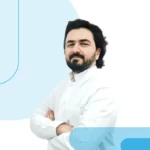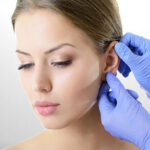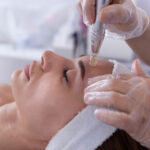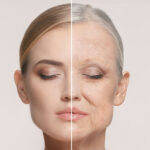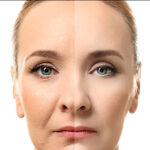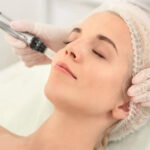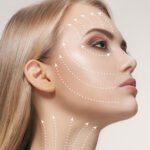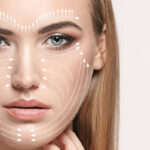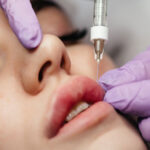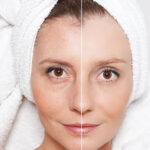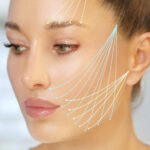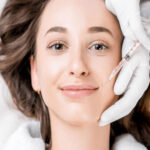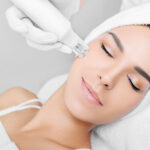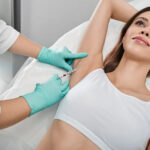Burtom ‣ Departments ‣ Plastic and Reconstructive Surgery
Language: 🇬🇧 English | 🇹🇷 Türkçe

Plastic and Reconstructive Surgery Department Overview

The Physical Therapy and Rehabilitation Department is dedicated to optimizing physical function and well-being through comprehensive care. Our skilled team of therapists employs evidence-based practices to address a spectrum of conditions, including musculoskeletal injuries, neurological disorders, and postoperative rehabilitation. Utilizing advanced techniques, personalized exercise plans, and cutting-edge equipment, we aim to restore mobility, alleviate pain, and enhance the overall quality of life for our patients. With a patient-centric approach, we prioritize individualized care, education, and support throughout the rehabilitation journey.
Key Functions of an Plastic and Reconstructive Surgery

The key functions of Plastic and Reconstructive Surgery encompass a broad spectrum of procedures aimed at enhancing aesthetics, restoring form and function, and addressing congenital or acquired anomalies. Here are the key functions:
Cosmetic Surgery: Offering procedures such as facelifts, rhinoplasty, breast augmentation, and liposuction to enhance aesthetic appearance.
Reconstructive Surgery: Addressing deformities resulting from trauma, congenital conditions, or cancer surgeries to restore normal function and appearance.
Breast Reconstruction: Performing procedures like breast augmentation, reduction, or reconstruction post-mastectomy to enhance breast appearance and symmetry.
Hand Surgery: Treating conditions affecting the hand, including congenital anomalies, injuries, and disorders like carpal tunnel syndrome.
Maxillofacial Surgery: Correcting facial and jaw abnormalities, performing orthognathic surgery, and addressing issues related to the jaw and oral structures.
Burn Reconstruction: Restoring function and appearance for individuals who have experienced burns, including scar revision and skin grafts.
Microsurgery: Utilizing advanced microsurgical techniques for intricate procedures such as tissue transplantation and nerve repair.
Body Contouring: Performing surgeries like abdominoplasty and body lifts to improve body shape and contour after weight loss or pregnancy.
Cleft Lip and Palate Repair: Correcting congenital conditions affecting the facial structures to improve speech, feeding, and overall appearance.
Scar Revision: Minimizing the appearance of scars through surgical techniques, improving both aesthetics and function.
Gender Confirmation Surgery: Offering surgical interventions for individuals seeking gender-affirming procedures, such as transgender surgery.
Lymphedema Surgery: Addressing lymphedema through surgical techniques to reduce swelling and improve overall function.
Reconstructive Procedures After Cancer Surgery: Restoring appearance and function after cancer-related surgeries, such as breast reconstruction following mastectomy.
Aesthetic Injectables: Providing non-surgical options like Botox and dermal fillers for facial rejuvenation and wrinkle reduction.
Pediatric Plastic Surgery: Performing plastic and reconstructive procedures for children with congenital anomalies or acquired conditions.
Tissue Expansion: Stretching healthy tissue to facilitate reconstruction, commonly used in breast reconstruction.
Rhinoplasty (Nose Surgery): Enhancing nasal aesthetics and function through surgical interventions.
Reconstructive Procedures for Trauma: Addressing facial and bodily trauma through reconstructive surgeries to restore normal appearance and function.
Vaginal Rejuvenation: Offering surgical and non-surgical options for aesthetic and functional improvements in the vaginal area.
Collaboration with Multidisciplinary Teams: Working closely with other medical specialties to provide comprehensive care for complex cases.
These key functions collectively highlight the diverse and transformative nature of Plastic and Reconstructive Surgery, encompassing procedures that range from cosmetic enhancements to life-changing reconstructive interventions. The field is dedicated to improving both the physical appearance and the overall well-being of individuals.
Situations within the scope of Plastic and Reconstructive Surgery

Plastic and Reconstructive Surgery encompasses a diverse range of situations, addressing both aesthetic and functional concerns. Here are various situations within the scope of this specialized field:
Cosmetic Facial Procedures: Facelifts, rhinoplasty, eyelid surgery, and other interventions to enhance facial aesthetics.
Breast Augmentation and Reduction: Aesthetic enhancement or reduction of breast size to achieve desired proportions.
Breast Reconstruction: Restoring breast form and symmetry after mastectomy, often following cancer treatment.
Body Contouring: Procedures such as liposuction and tummy tucks to reshape and enhance body contours.
Reconstruction After Trauma: Repairing facial and bodily structures following accidents, injuries, or trauma.
Correction of Congenital Anomalies: Addressing birth defects such as cleft lip and palate through reconstructive surgery.
Hand and Upper Extremity Surgery: Treating conditions affecting the hand and upper extremities, including congenital issues and injuries.
Maxillofacial Surgery: Correcting abnormalities in the jaw, facial bones, and oral structures.
Gender Confirmation Surgery: Surgical procedures to align physical characteristics with an individual’s gender identity.
Scar Revision: Improving the appearance of scars through surgical techniques.
Reconstructive Procedures After Cancer Surgery: Restoring form and function post-cancer surgeries, such as breast reconstruction.
Microsurgery for Tissue Transfer: Utilizing advanced microsurgical techniques for precise tissue transplantation.
Burn Reconstruction: Restoring appearance and function for individuals who have experienced burns.
Aesthetic Injectables: Non-surgical treatments like Botox and dermal fillers for facial rejuvenation.
Pediatric Plastic Surgery: Correcting congenital anomalies and deformities in children.
Rhinoplasty (Nose Surgery): Enhancing nasal aesthetics and function through surgical interventions.
Vaginal Rejuvenation: Surgical and non-surgical options for aesthetic and functional improvements in the vaginal area.
Liposuction: Removing excess fat deposits to sculpt and contour specific areas of the body.
Ear Surgery (Otoplasty): Correcting ear deformities or protrusion through surgical procedures.
Reconstruction Following Weight Loss: Addressing excess skin and tissue after significant weight loss through bariatric surgery.
These situations highlight the diverse applications of Plastic and Reconstructive Surgery, where skilled surgeons employ a range of techniques to address both cosmetic desires and medical needs, ultimately enhancing patients’ overall well-being and quality of life.
Patient Experience in the Plastic and Reconstructive Surgery

The patient experience in Plastic and Reconstructive Surgery is characterized by personalized care, collaboration, and a commitment to achieving both aesthetic and functional outcomes. Here are key aspects of the patient experience in this specialized field:
Initial Consultation: The journey often begins with a thorough consultation where the surgeon listens to the patient’s concerns, goals, and medical history. This dialogue establishes trust and allows for a clear understanding of expectations.
Individualized Treatment Plans: Plastic and Reconstructive Surgeons tailor treatment plans to each patient’s unique needs. Whether for cosmetic enhancement or reconstructive purposes, the plan is designed to achieve the desired outcome while considering the patient’s overall health.
Clear Communication: Open and transparent communication is paramount. Surgeons explain procedures, potential risks, and expected outcomes in a way that patients can comprehend, empowering them to make informed decisions.
Emotional Support: Given that many procedures in this field address aesthetic concerns or result from traumatic experiences, providing emotional support is crucial. Surgeons and their teams understand the sensitive nature of these interventions and strive to create a compassionate and supportive environment.
Preoperative Education: Patients receive comprehensive preoperative guidance, including instructions on preparation, potential side effects, and what to expect during recovery. This education helps alleviate anxiety and ensures a smoother process.
Advanced Technology and Techniques: Patients benefit from state-of-the-art technology and advanced surgical techniques, contributing to more precise procedures and potentially shorter recovery times.
Postoperative Care: The patient experience extends into the postoperative period, where attentive care is provided to monitor healing, manage any discomfort, and address any concerns that may arise.
Rehabilitation and Follow-up: For reconstructive procedures, rehabilitation may be part of the patient journey. Follow-up appointments allow the surgeon to track progress, make adjustments as needed, and address any lingering questions or concerns.
Collaboration with Multidisciplinary Teams: Plastic and Reconstructive Surgeons often collaborate with other medical specialists, such as oncologists or hand therapists, ensuring comprehensive care and a holistic approach to the patient’s well-being.
Patient Empowerment: Patients are actively involved in their care, empowered to make decisions that align with their goals. This collaborative approach fosters a sense of ownership and confidence in the chosen treatment path.
Long-Term Support: The patient-surgeon relationship extends beyond the immediate postoperative period. Patients may receive long-term support, particularly for those undergoing reconstructive surgery, to address evolving needs and ensure sustained well-being.
The patient experience in Plastic and Reconstructive Surgery is marked by empathy, professionalism, and a dedication to helping individuals achieve their desired outcomes. Whether for cosmetic enhancement or reconstructive purposes, the field is committed to enhancing both the physical and emotional aspects of a patient’s life.
Conclusion

In conclusion, Plastic and Reconstructive Surgery stands at the intersection of art and science, offering transformative solutions for individuals seeking aesthetic enhancement or reconstructive interventions. The field’s impact extends beyond physical appearance, encompassing emotional well-being and quality of life.
Plastic surgeons employ advanced techniques and technologies to tailor individualized treatment plans, addressing a diverse range of situations from cosmetic concerns to complex reconstructive needs. The patient experience is characterized by open communication, personalized care, and a commitment to achieving optimal outcomes.
Whether restoring form and function after trauma or enhancing natural beauty, Plastic and Reconstructive Surgery plays a vital role in empowering individuals to feel more confident and lead fulfilling lives. The collaboration between patients and skilled surgeons fosters a journey of self-discovery and positive transformation, marking the field as an essential contributor to overall well-being and personal satisfaction.
Medical Devices Used in the Plastic and Reconstructive Surgery

- Implants:
- Breast Implants: Used in breast augmentation or reconstruction procedures.
- Facial Implants: Enhance facial contours, such as cheek or chin implants.
- Soft Tissue Fillers:
- Dermal Fillers: Injectable substances used to add volume to the skin, addressing wrinkles and enhancing facial features.
- Surgical Instruments:
- Scalpels, Scissors, and Forceps: Standard surgical tools for precise incisions and tissue manipulation.
- Microsurgical Instruments: Specialized tools for intricate procedures like tissue transfer.
- Laser Systems:
- CO2 Lasers: Used for skin resurfacing and scar revision.
- Diode Lasers: Precision tools for various cosmetic procedures.
- Electrosurgical Devices:
- Electrocautery Units: Used for cutting or coagulating tissues during surgery.
- Tissue Expanders:
- Used in breast reconstruction to stretch the skin and create space for a permanent implant.
- Sutures and Staples:
- Various types for wound closure and tissue approximation.
- Microsurgical Equipment:
- Microscopes: Essential for delicate procedures like nerve repair or tissue transplantation.
- Microsurgical Instruments: Tiny tools for procedures requiring extreme precision.
- Fat Grafting Devices:
- Instruments for harvesting and injecting fat in procedures like liposuction and fat transfer.
- External Fixators:
- Used in reconstructive procedures involving bone or joint correction.
- Dressing and Wound Care Devices:
- Specialized dressings and wound care products for postoperative care.
- Tissue Glues and Adhesives:
- Surgical adhesives used for wound closure, minimizing the need for traditional sutures.
- Negative Pressure Wound Therapy (NPWT):
- Devices that apply controlled suction to wounds, promoting healing.
- Endoscope Systems:
- Used in minimally invasive procedures for visualizing internal structures.
- 3D Imaging Systems:
- Advanced imaging tools for surgical planning and visualization.
- Ultrasonic Liposuction Devices:
- Tools for removing excess fat through ultrasonic energy.
- Compression Garments:
- Worn postoperatively to reduce swelling and support the healing process.
- Handheld Doppler Devices:
- Used to assess blood flow, particularly in microsurgical procedures.
- Reconstructive Mesh and Grafts:
- Supports tissue reconstruction in procedures like hernia repair or abdominal wall reconstruction.
- Phototherapy Devices:
- Used for scar management and promoting wound healing.
Areas of interest

Get a Free Second Opinion

I consent to Burtom Health Group using my aforesaid personal data for the purposes described in this notice and understand that I can withdraw my consent at any time by sending a request to info@burtom.com.

